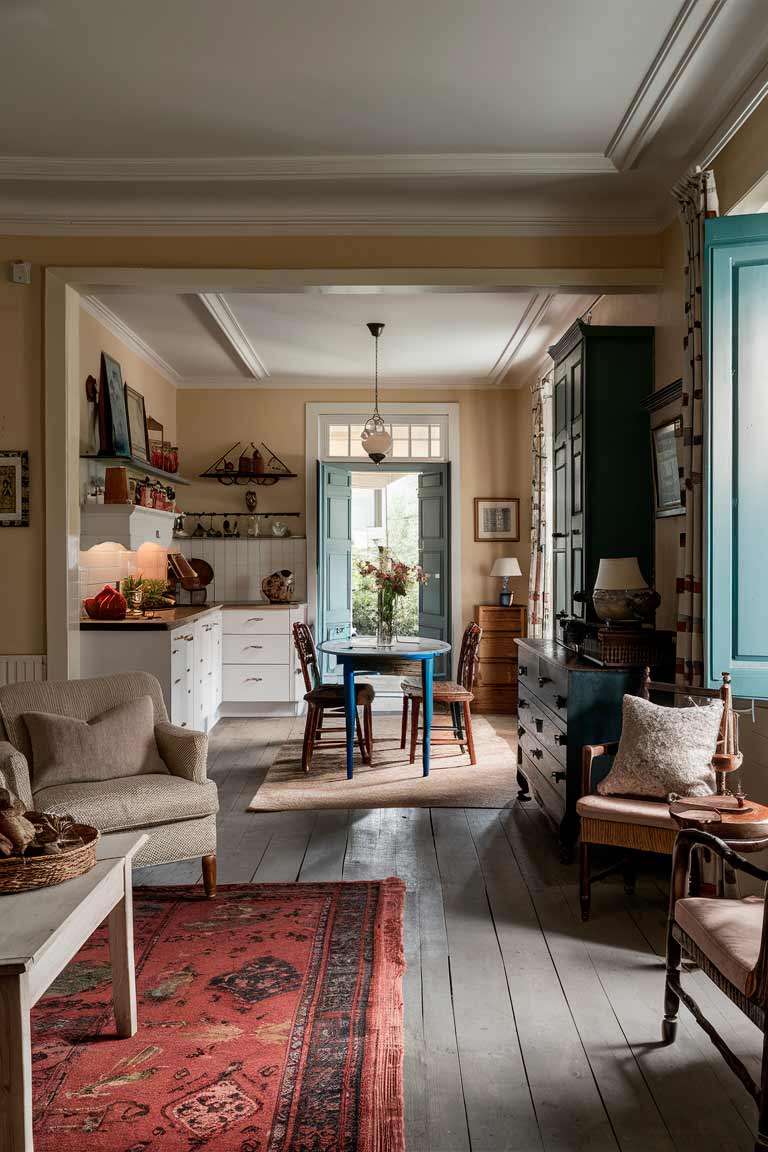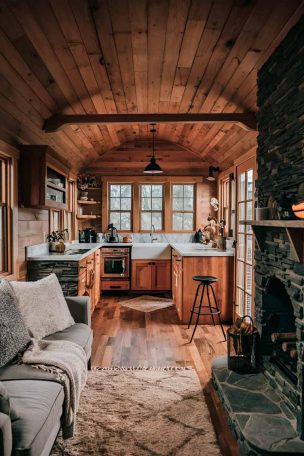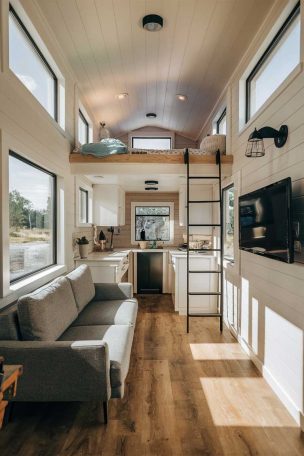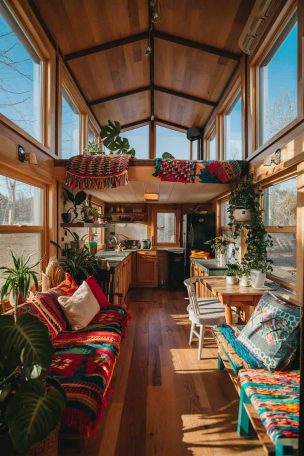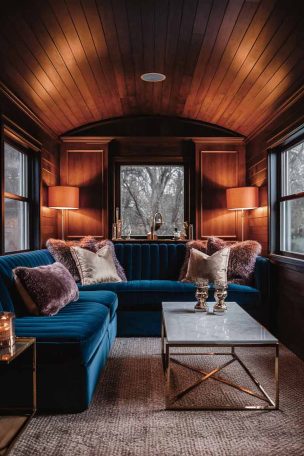There’s something undeniably captivating about colonial architecture—its symmetry, timeless elegance, and rich historical significance. But what if you’re working with limited square footage?
Fear not! In this article, we’ll explore how to infuse the essence of colonial design into tiny homes, creating spaces that are both functional and brimming with period charm.
From clever storage solutions to authentic decor choices, we’ll guide you through transforming your small space into a colonial haven. Let’s embark on this journey to prove that big styles can indeed come in small packages!
The Essence of Colonial Design
Colonial design is all about balance, tradition, and a touch of understated sophistication. When working with a tiny home, it’s crucial to distill these elements to their essence.
Key Elements
The hallmarks of colonial design include symmetry, traditional color palettes, and period-appropriate materials. In a small space, each of these elements needs to be carefully considered and thoughtfully implemented.
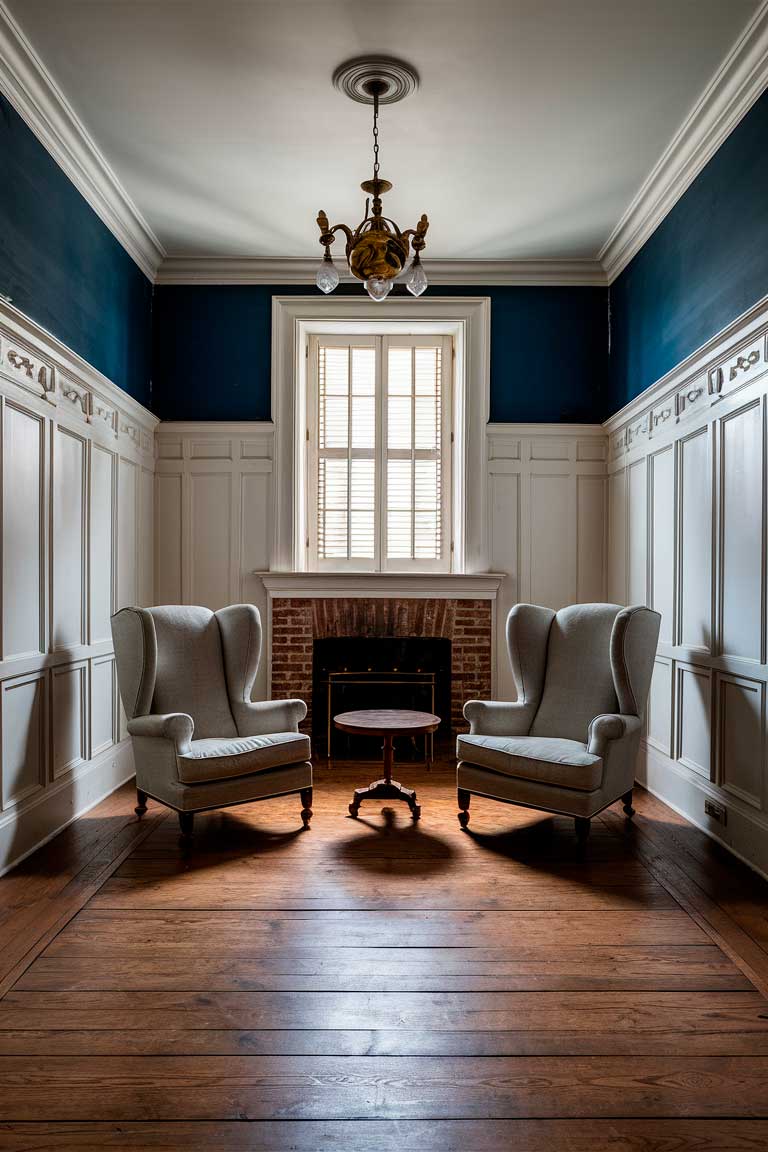
Symmetry and balance are the cornerstones of colonial design. Even in a tiny home, you can achieve this by arranging furniture and decor items in pairs or mirroring layouts on either side of a central focal point, like a fireplace or a window.
Traditional color palettes typically include deep, rich hues like navy blue, forest green, and burgundy, balanced with creamy whites and warm neutrals. In a small space, consider using these colors as accents against a lighter backdrop to prevent the room from feeling cramped.
Wood is king in colonial design when it comes to materials. Opt for hardwoods like oak, maple, or pine for flooring and furniture. Complement these with natural fibers like wool, cotton, and linen for textiles.
Adapting Colonial Style to Tiny Homes
The challenge – and the fun – lies in adapting these classic elements to work in a smaller footprint. It’s all about maximizing functionality while creating visual interest.
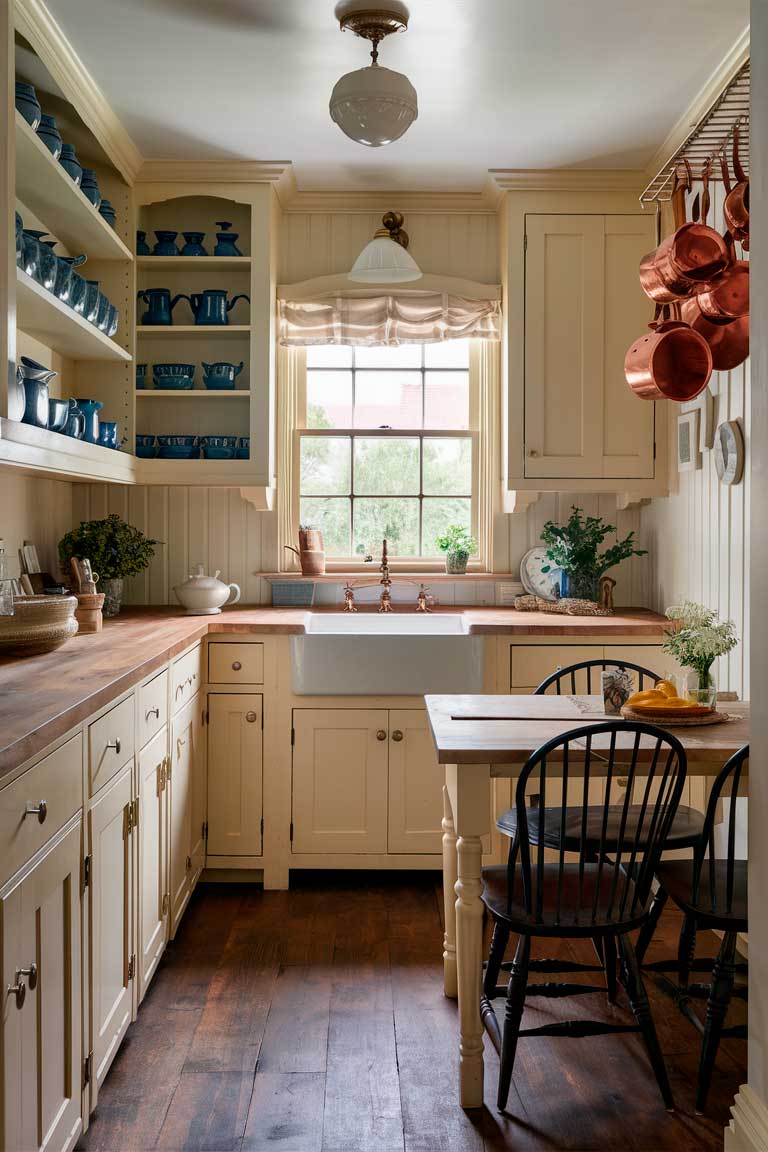
In tiny homes, every inch counts. Look for furniture pieces that serve multiple purposes – a dining table that doubles as a workspace, or a chest that provides both storage and seating. Don’t be afraid to scale down traditional colonial pieces. A smaller version of a classic highboy chest, for example, can provide ample storage without overwhelming the space.
Creating visual interest in limited square footage is key to preventing your tiny colonial home from feeling cramped. Use texture to add depth – think wainscoting on the walls, braided rugs on the floors, and richly patterned fabrics for upholstery and window treatments.
Room-by-Room Design Strategies
Now, let’s dive into how to bring colonial charm to each room in your tiny home.
Living Spaces
Living Room
The living room is often the heart of a colonial home, and in a tiny space, it needs to work extra hard.
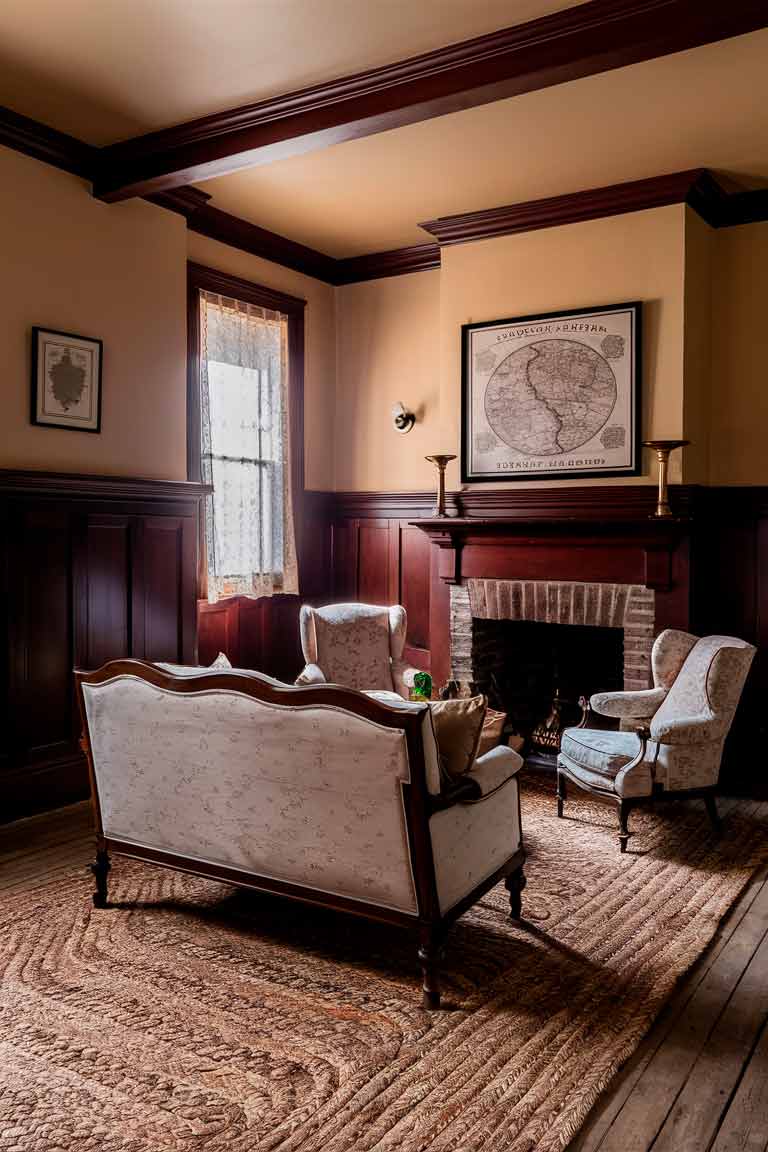
Wainscoting is a hallmark of colonial design and can work wonders in a small space. It adds texture and interest to the walls while also making the room feel more polished. Pair deep mahogany wainscoting with light-colored plaster or paint above to create contrast and prevent the room from feeling too dark.
A fireplace, if you’re lucky enough to have one, should be the focal point of your living room. If a real fireplace isn’t an option, consider an electric version or even a faux mantel to create the illusion of one. Hang a period-appropriate piece of art, like a colonial-era map or a traditional landscape painting, above the mantel to complete the look.
When it comes to furniture, choose pieces that are scaled appropriately for your space. A small Chippendale-style sofa or a pair of wingback chairs upholstered in a floral print can provide comfortable seating without overwhelming the room. A trestle table can serve as both a coffee table and extra dining space when needed.
Parlor
In colonial times, the parlor was a formal room for receiving guests. In a tiny home, your parlor might double as an office or reading nook.
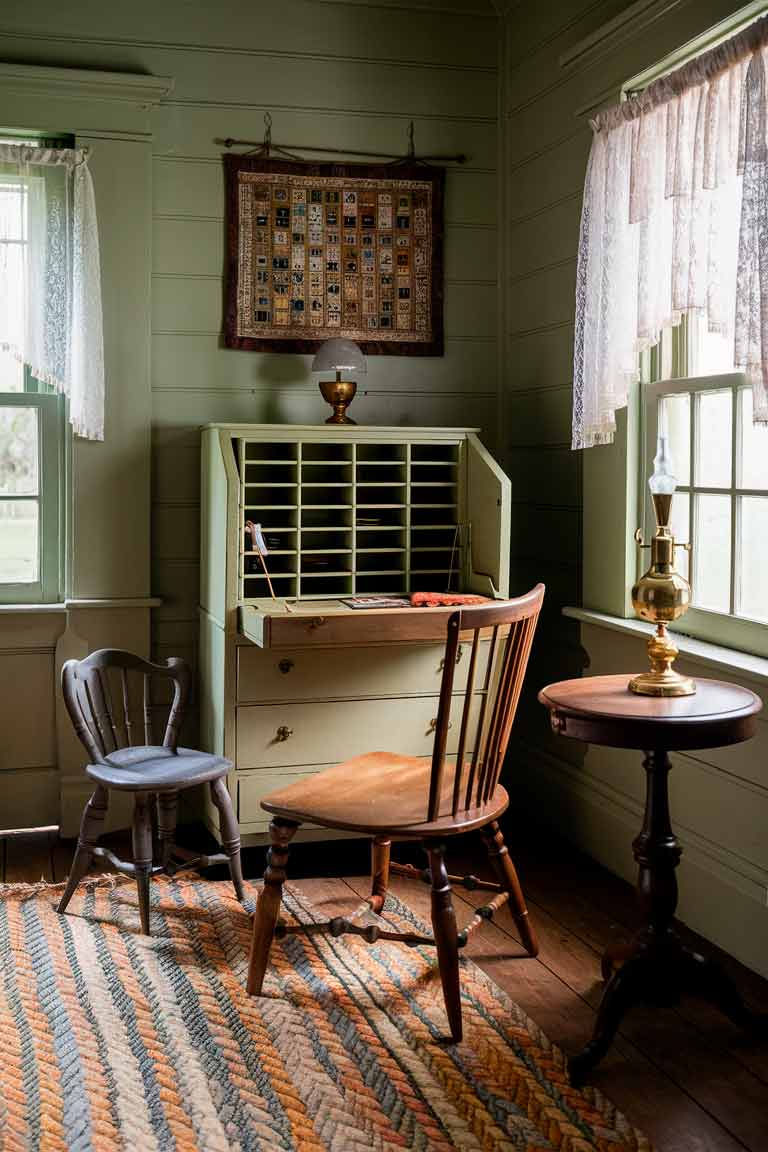
A secretary desk is the perfect addition to a tiny colonial parlor. It provides a workspace when needed and can be closed up to maintain a tidy appearance. Pair it with a Queen Anne-style chair for an elegant seating option.
For additional seating, consider a spindle chair or a small settee. These lightweight pieces can be easily moved around as needed. A side table with a brass oil lamp or candlestick adds both functionality and period-appropriate ambiance.
Decorate the walls with framed samplers or silhouettes for an authentic colonial touch. These small-scale art pieces won’t overwhelm your limited wall space but will add character and interest to the room.
Kitchen and Dining Areas
Kitchen
The kitchen is the workhorse of any home, and in a tiny colonial-style house, it needs to be both functional and charming.
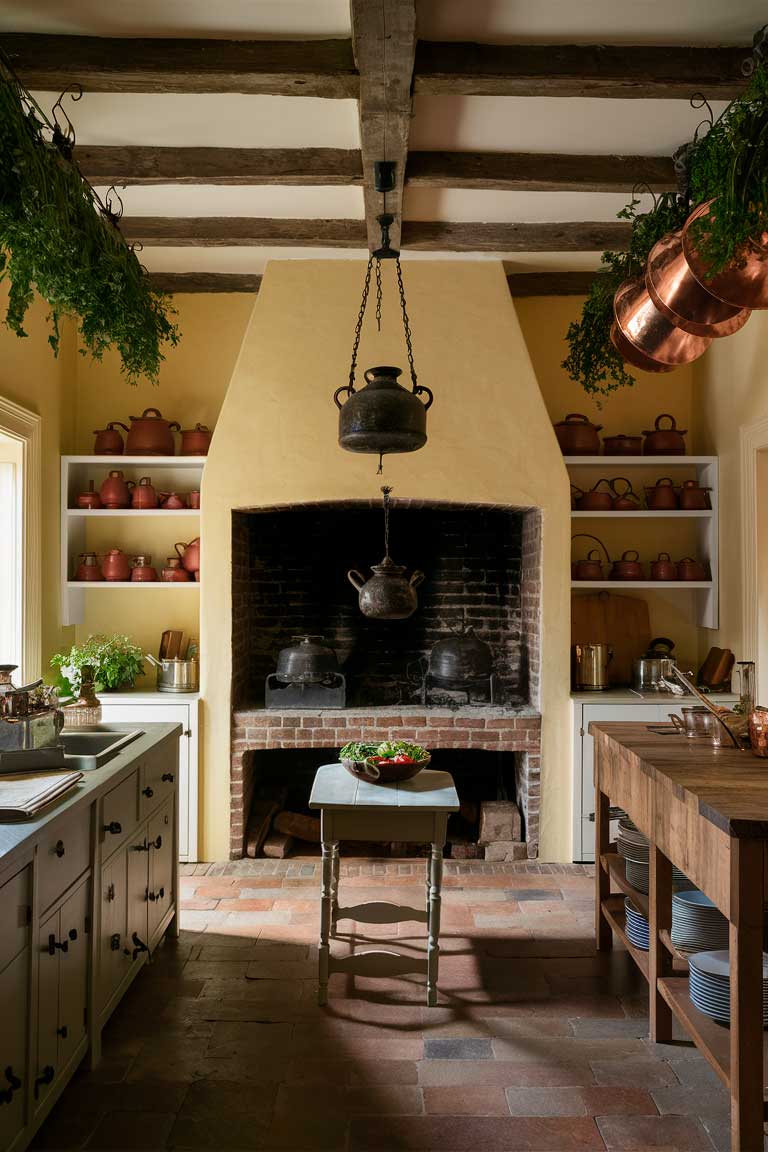
In a colonial-style kitchen, the hearth would have been the center of activity. If possible, make your stove or a faux hearth the focal point of the room. Surround it with brick or stone for an authentic look.
Open shelving is both period-appropriate and practical in a small kitchen. Use it to display your collection of earthenware, blue and white china, or copper pots and pans. This provides easy access to your cookware and also serves as decoration.
A butcher block countertop adds warmth and functionality to your kitchen. It’s perfect for food prep and can even double as a casual dining spot with the addition of a couple of stools.
Don’t forget the details that make a colonial kitchen special – hang bundles of dried herbs from the ceiling beams, keep a bowl of fresh produce on the table, and use natural materials like wood and stone wherever possible.
Dining Room
In a tiny home, your dining area might be part of your kitchen or living room, but that doesn’t mean it can’t have its own colonial character.
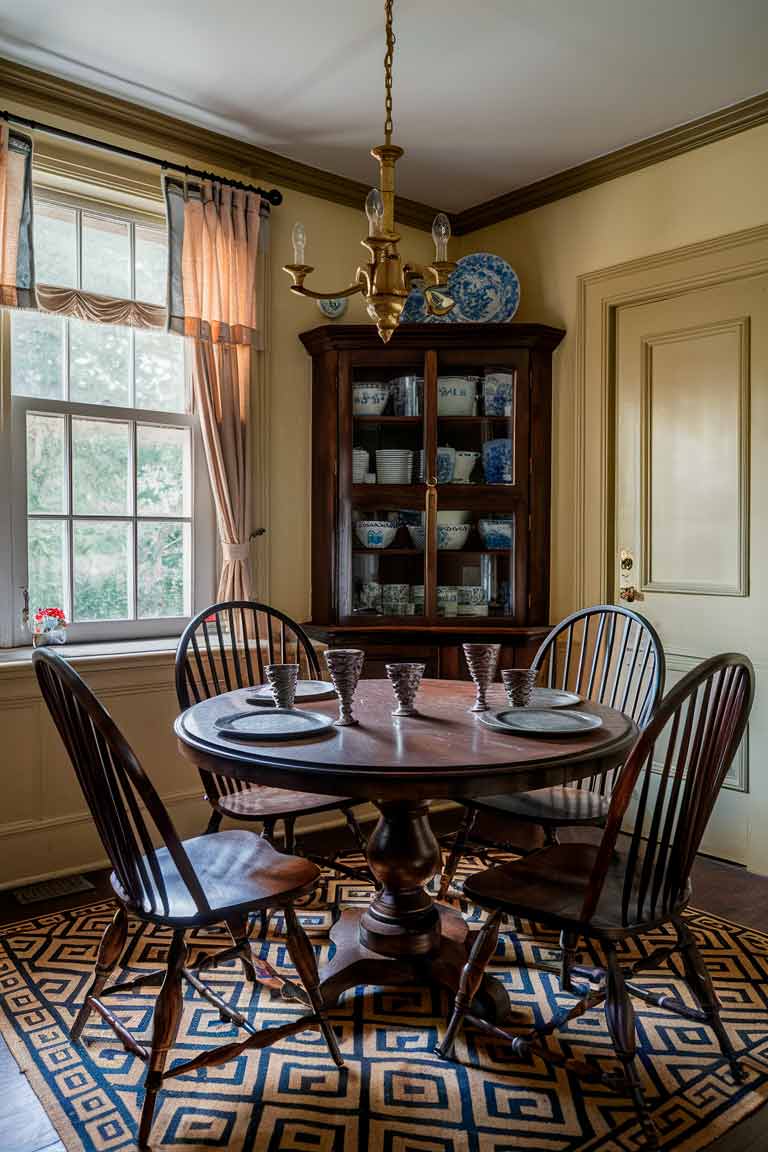
A round pedestal table is a great choice for a small dining area. It takes up less visual space than a rectangular table and makes it easy to squeeze in an extra chair when needed. Surround it with Windsor chairs for an authentic colonial look.
If space allows, a corner cupboard is a classic colonial piece that provides storage and display space for your china and serving pieces. Choose one with glass doors on the top half to show off your best dishes.
Set your table with pewter plates and goblets for a truly colonial feel. When not in use, these can be displayed on open shelves or in your corner cupboard.
Lighting is crucial in a dining area. A brass chandelier or a couple of wall sconces will provide ambiance and reinforce the colonial style. And don’t forget natural light – if possible, position your dining area near a window.
Bedrooms
Master Bedroom
Your bedroom should be a cozy retreat, and colonial style lends itself perfectly to creating a warm, inviting space.
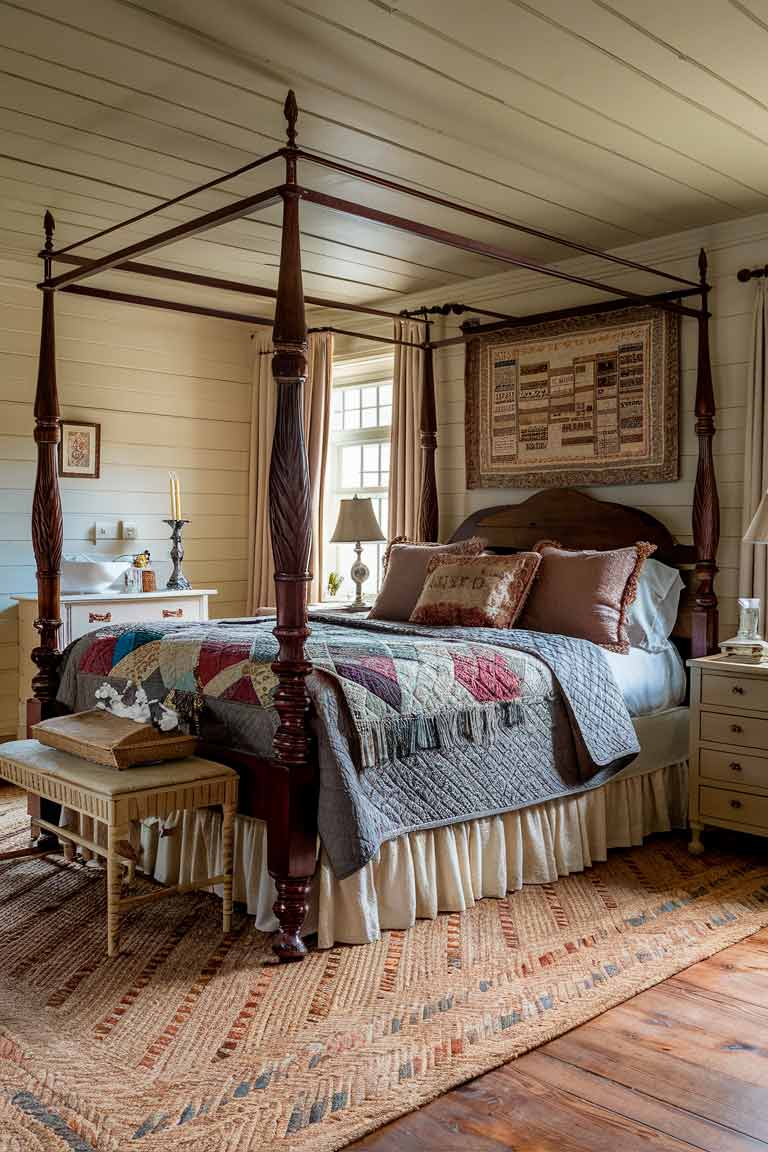
A four-poster bed is quintessentially colonial and can work even in a small bedroom. If a full four-poster feels too imposing, consider a pencil-post bed, which has thinner posts and a lighter overall look.
Dress your bed with layers of comfort – a patchwork quilt or a woven coverlet, plenty of pillows, and maybe even bed curtains for an extra touch of coziness and authenticity.
For storage, a chest of drawers or a small highboy can provide ample space without taking up too much floor area. Top it with a few carefully chosen accessories – a pewter candlestick, a porcelain wash basin, or a small mirror.
Keep the walls light to make the room feel more spacious, but add warmth with textiles like braided rugs and linen curtains. A framed sampler or a small colonial-era print above the bed adds a perfect finishing touch.
Children’s Room/Nursery
Even in a tiny home, a child’s room or nursery can be infused with colonial charm.
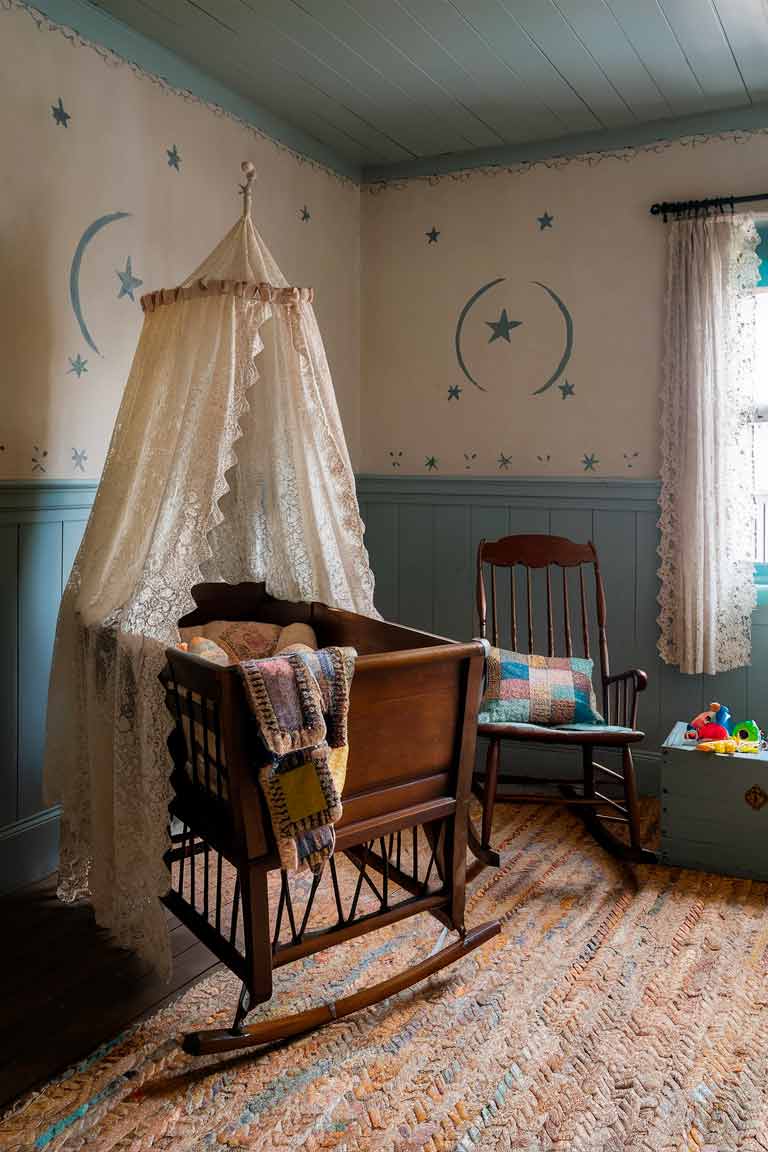
In a colonial-style nursery, a wooden cradle takes center stage. Look for one with simple, clean lines and maybe even a canopy for added charm. Dress it with soft, natural fabrics like cotton and linen.
A rocking chair is both practical and period-appropriate. Choose one with spindles or slats for an authentic look, and add comfort with a patchwork cushion.
Storage is crucial in a small nursery. A painted chest can hold clothes and toys while adding a pop of soft color to the room. Stenciled patterns on the walls – perhaps stars, moons, or simple flowers – add whimsy without overwhelming the small space.
Keep the overall color palette soft and soothing with creamy whites, soft blues, and pale yellows. These colors are both period-appropriate and perfect for a restful nursery.
Bathroom
Bringing colonial style to a tiny bathroom can be a challenge, but with the right elements, you can create a space that’s both functional and charming.
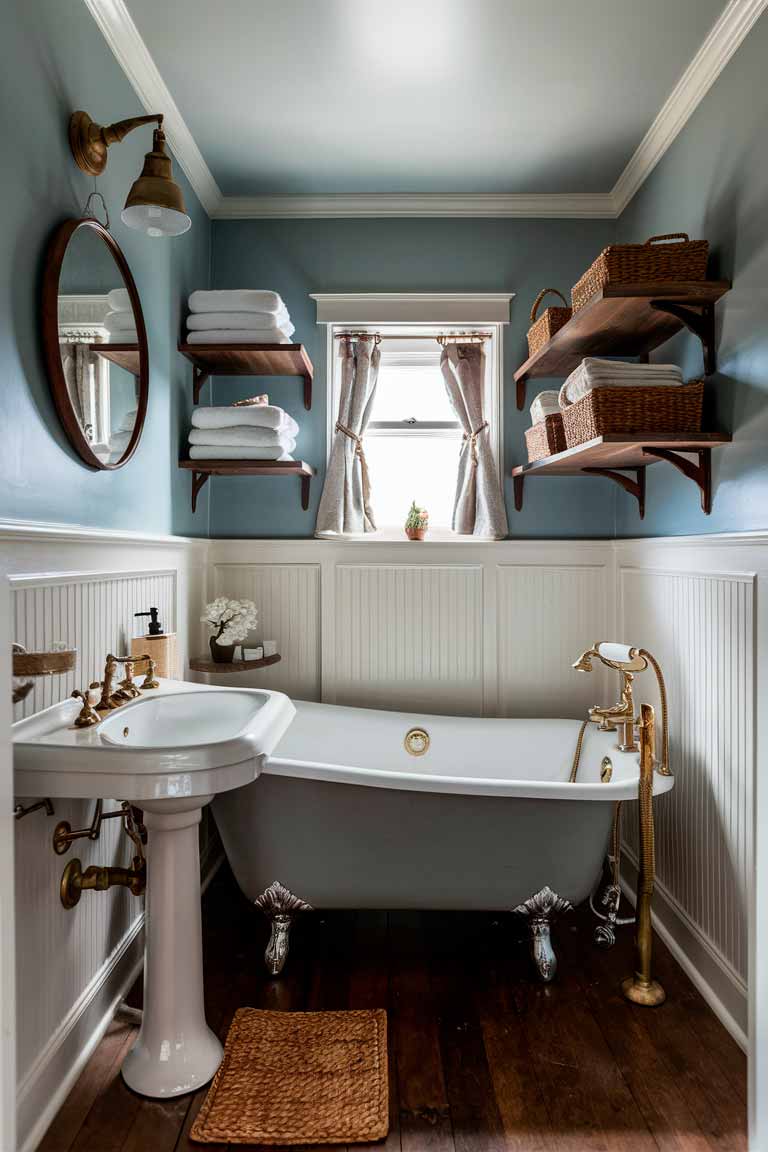
A clawfoot tub is the ultimate in colonial bathroom luxury. Even in a tiny bathroom, a smaller version can fit and provide a focal point. If a clawfoot tub isn’t possible, consider a tub with a wood panel front to echo the look.
A pedestal sink takes up less visual space than a vanity and is perfect for a colonial-style bathroom. Pair it with a round mirror with a simple wooden frame.
Storage can be a challenge in a small bathroom, but open shelving can provide space for towels and toiletries while maintaining an airy feel. Use woven baskets to corral smaller items and add texture.
For the walls, consider beadboard wainscoting painted white, with a soft color like blue-gray or sage green above. This adds interest and character without making the space feel closed in.
Remember the details—brass fixtures, a braided rug on the floor, and maybe even a small wooden stool to hold toiletries near the tub can all contribute to the colonial feel.
Design Elements and Accessories
Textiles and Patterns
Textiles play a crucial role in bringing warmth and authenticity to a colonial-style home, even a tiny one.
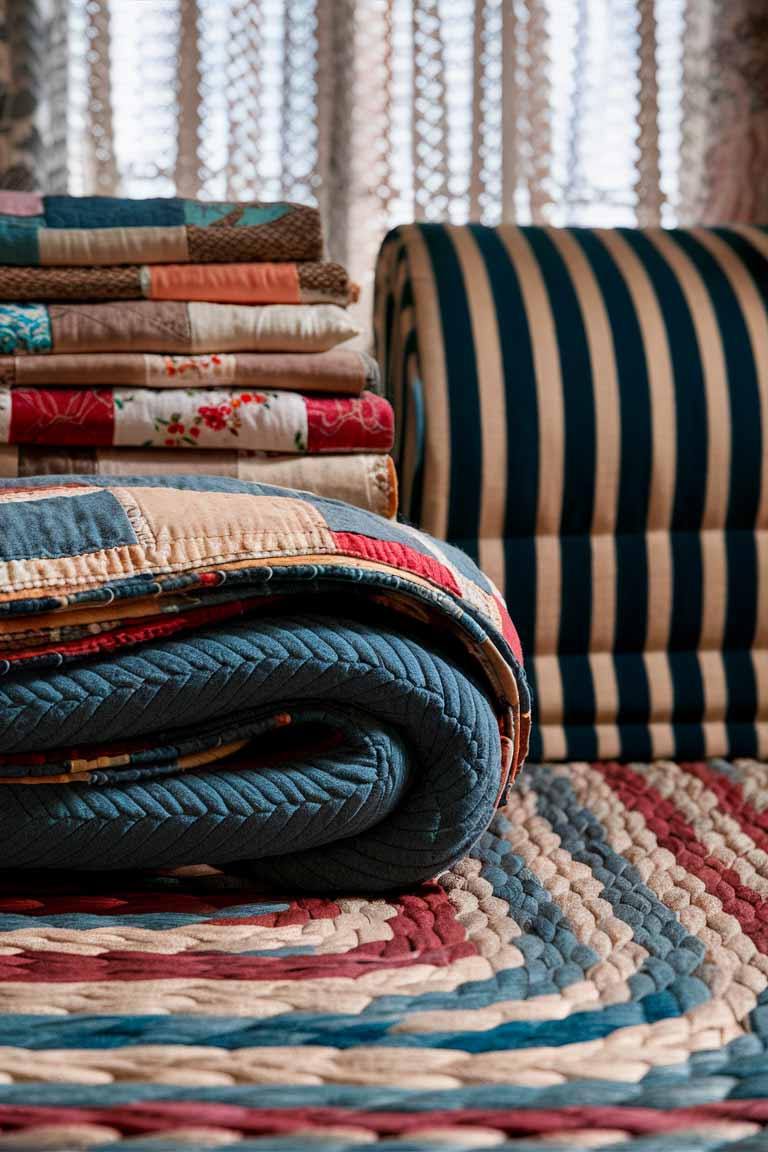
Braided rugs are a colonial staple and work well in small spaces. They add warmth underfoot and can help define areas in an open-plan tiny home. Choose muted colors that complement your overall color scheme.
Quilts and coverlets are another hallmark of colonial style. Use them on beds, of course, but also consider hanging a particularly beautiful one on the wall as art, or draping it over the back of a sofa or chair.
When it comes to upholstery, look for small-scale floral prints, subtle stripes, or solid colors in period-appropriate hues. These can be used on chair seats, pillows, or even as curtains.
Don’t forget about lace – curtains, table runners, or even a small doily can add a delicate touch to your colonial decor.
Lighting
Proper lighting is crucial in a small space, and colonial-style fixtures can add both illumination and ambiance.
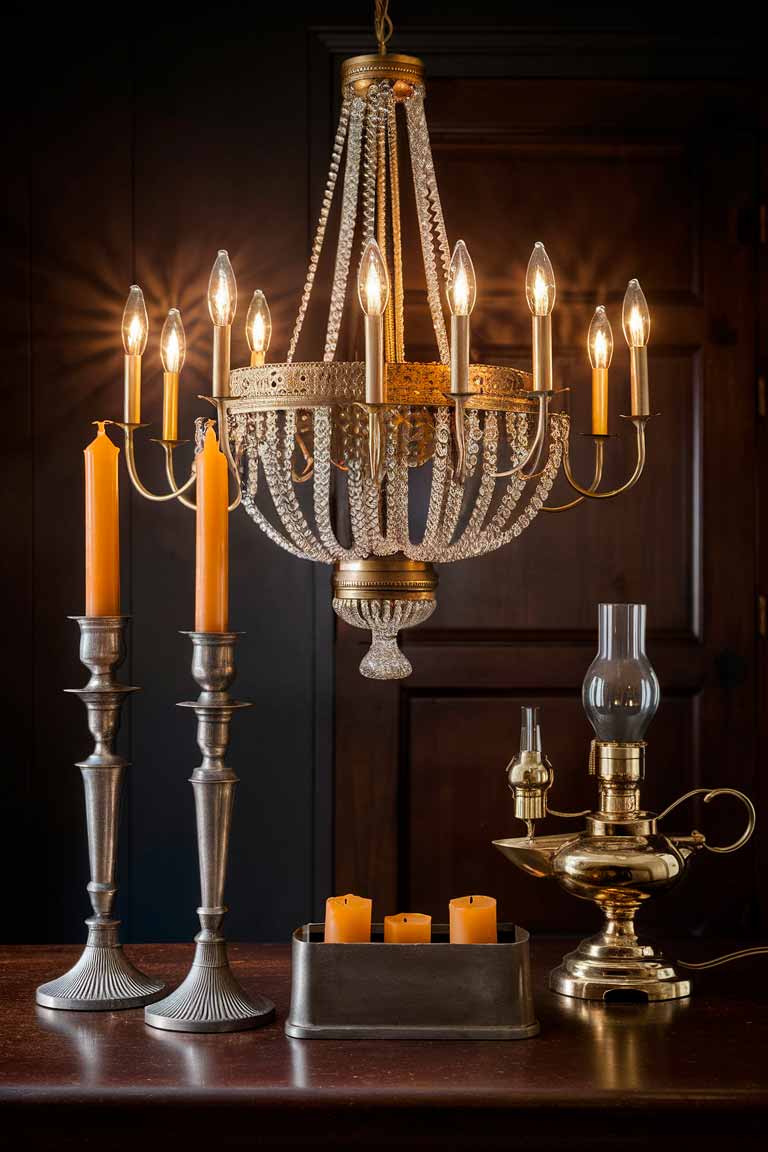
Chandeliers, even small ones, can add a touch of elegance to a tiny colonial home. Look for brass fixtures with candle-style bulbs for an authentic look.
Wall sconces are perfect for small spaces, providing light without taking up floor or table space. Choose simple, bracket-style sconces in brass or pewter.
Don’t underestimate the charm of candlelight. Use pewter or brass candlesticks on tables and mantels. For safety in a small space, consider battery-operated candles that mimic the flicker of real flames.
Oil lamps, whether functional or purely decorative, add an authentic touch. Place them on side tables or hang them on walls for additional light and colonial charm.
Wall Treatments
Wall treatments can have a big impact in a small space, helping to set the colonial tone while also making rooms feel larger or cozier as needed.
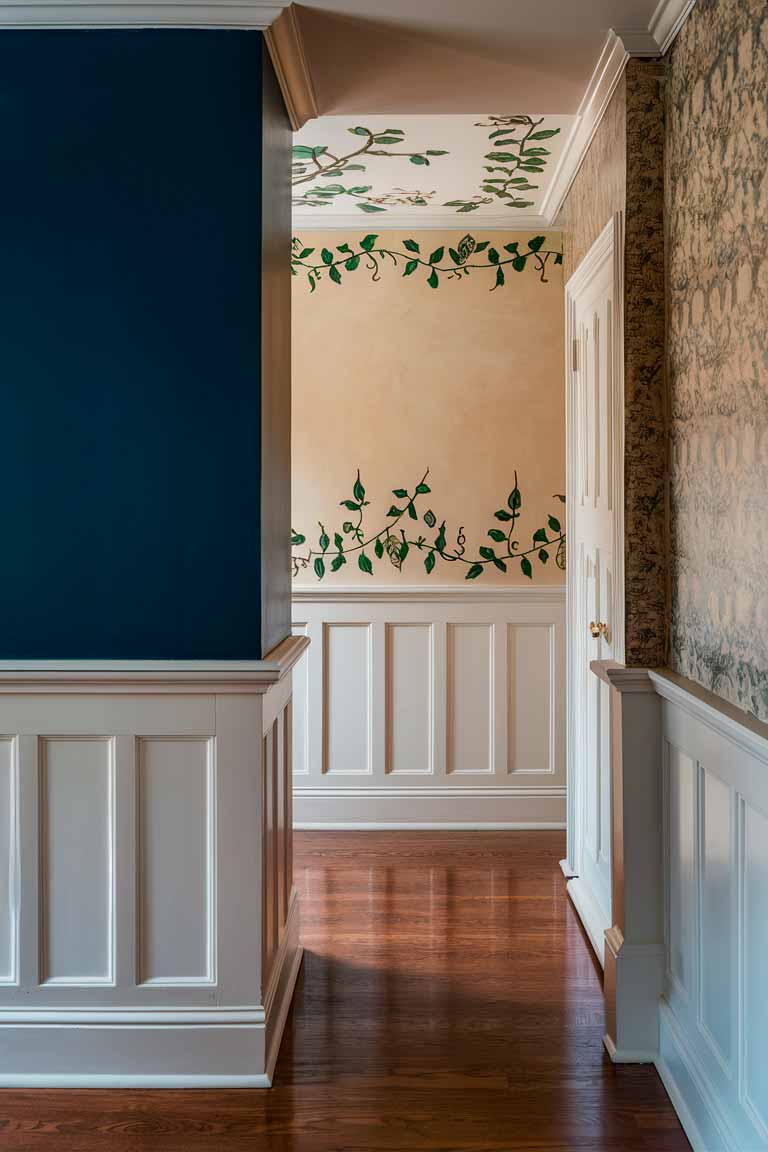
Wainscoting is a classic colonial wall treatment that works well in small spaces. It adds texture and interest to the walls while also protecting them from wear and tear. Paint it white or cream for a classic look, or try a bolder color for a more modern take on colonial style.
Above the wainscoting or on walls without it, stick to warm, earthy tones or soft pastels. These colors are period-appropriate and can help make a small space feel larger and more inviting.
For a touch of pattern, consider using stencils to create a border near the ceiling or around windows and doors. Simple geometric patterns or nature-inspired designs like vines and leaves work well.
If you want to use wallpaper, look for small-scale patterns in muted colors. Delicate florals, subtle stripes, or tonal damask patterns can add interest without overwhelming a small space.
Furniture Styles
Choosing the right furniture is crucial in a tiny colonial-style home. You’ll want pieces that are both functional and authentic to the period.
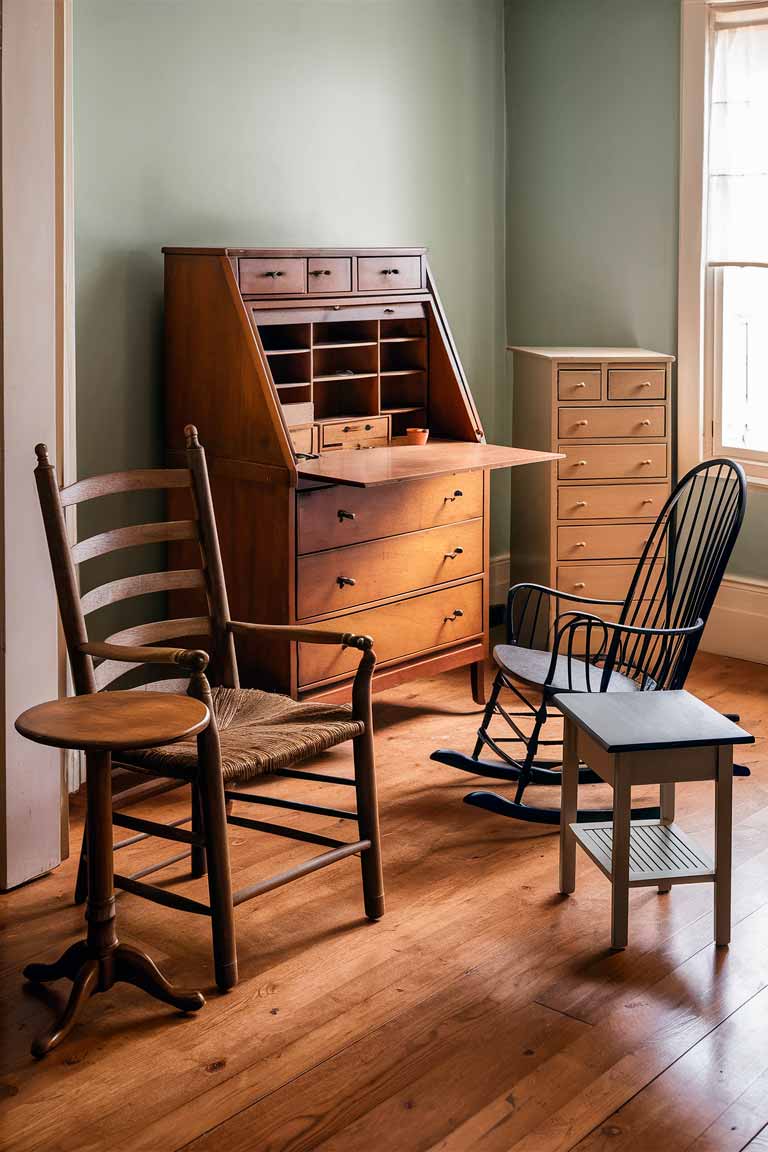
Windsor and ladderback chairs are quintessential colonial pieces that work well in small spaces. Their open designs help maintain a sense of lightness and don’t overwhelm a room. Use them around a dining table or as occasional seating in a living area.
Secretary desks are perfect for tiny colonial homes. They provide a workspace when needed and can be closed up to maintain a tidy appearance. Look for one with a slant-front lid that opens to reveal small drawers and cubbies – great for storing office supplies or displaying small collectibles.
For storage, consider a highboy chest. Its vertical design makes efficient use of space while providing ample storage. In a bedroom, it can replace a traditional dresser, while in a living area, it can store linens, games, or other household items.
Shaker-style furniture, with its clean lines and simple elegance, can be a great choice for tiny colonial homes. Its minimalist design helps prevent a small space from feeling cluttered.
Remember, in a tiny home, multi-functional furniture is key. Look for pieces like drop-leaf tables, storage ottomans, or beds with built-in drawers to maximize your space.
Accessories and Decor
The right accessories can truly bring your tiny colonial home to life, adding character and authenticity without cluttering your limited space.
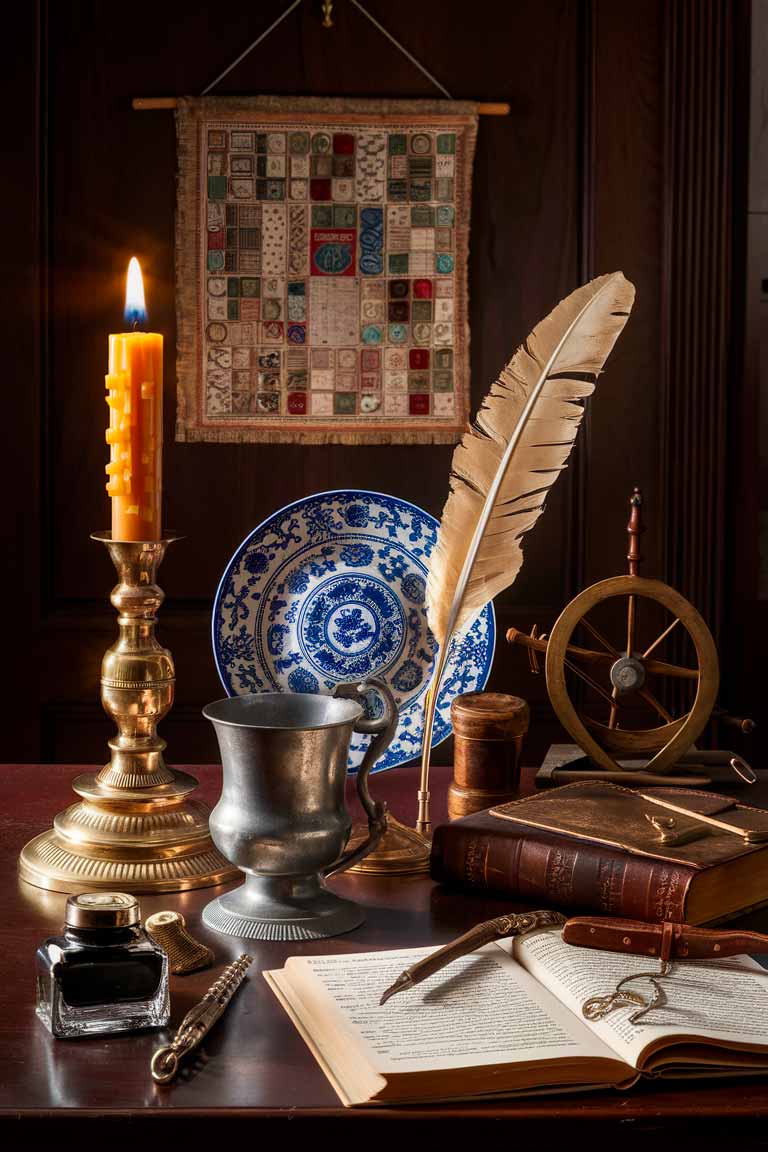
Functional decor was a hallmark of colonial homes. A small spinning wheel, for instance, can serve as both a decorative piece and a conversation starter. Place it in a corner of your living room or bedroom to add instant colonial charm.
Pewter pieces, like tankards, plates, or candle holders, are authentic to the period and add a touch of elegance. Display them on open shelves or use them as functional pieces in your dining area.
Blue and white porcelain, whether Chinese export ware or English delftware, was prized in colonial homes. A few carefully chosen pieces can add color and interest to your space. Display them in a corner cabinet or use a single plate as wall art.
Remember textiles as decor. Samplers, whether antique or modern reproductions, make great wall art and add a personal touch to your colonial decor.
Brass and copper items, from candlesticks to kettles, add warmth and shine to your space. Use them as both functional items and decorative accents.
Space-Saving Techniques for Tiny Colonial Homes
In a tiny colonial home, making the most of every inch is crucial. Here are some space-saving techniques that don’t sacrifice style:
Vertical Storage Solutions
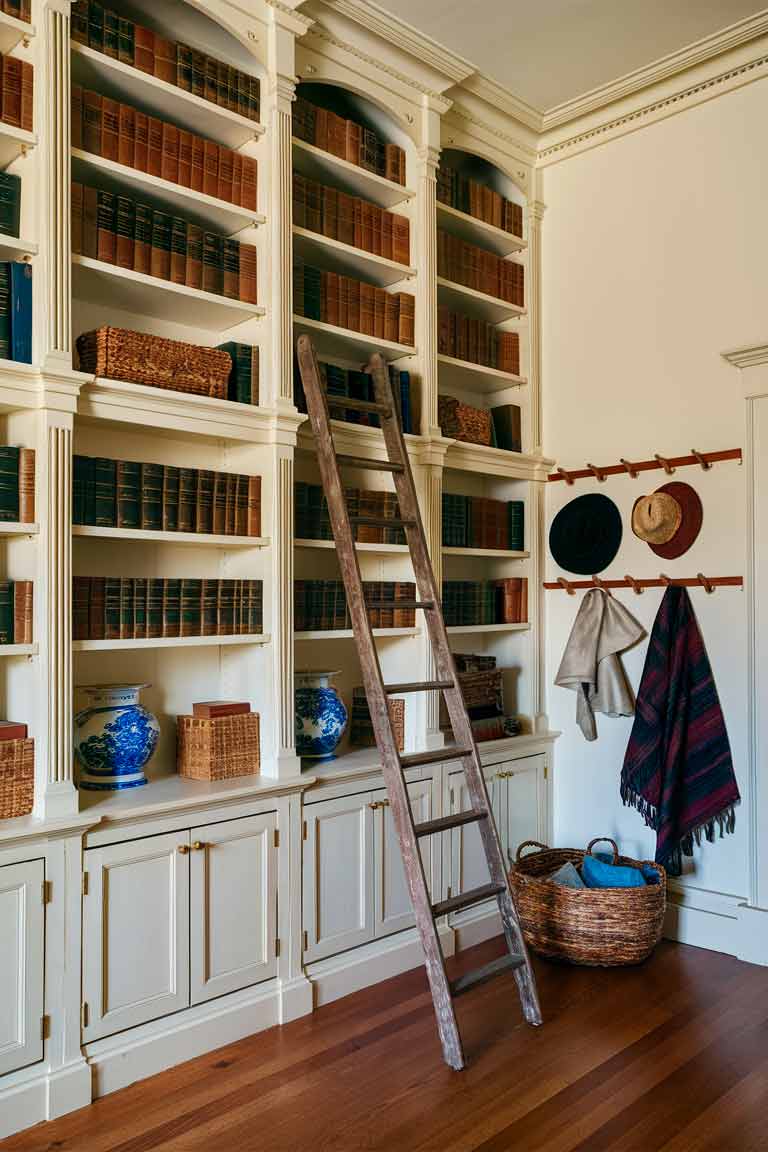
Floor-to-ceiling bookcases make excellent use of vertical space while providing a perfect backdrop for displaying books, pottery, and other colonial-style accessories. Paint them the same color as your walls to help them blend in and make the room feel larger.
Peg rails, a common feature in colonial homes, offer versatile storage. Use them in entryways for coats and hats, in bedrooms for clothing, or in kitchens for pots and utensils.
In the kitchen, consider hanging pots and pans from the ceiling or on a wall-mounted rack. This frees up cabinet space and adds to the colonial aesthetic.
Multi-Functional Furniture
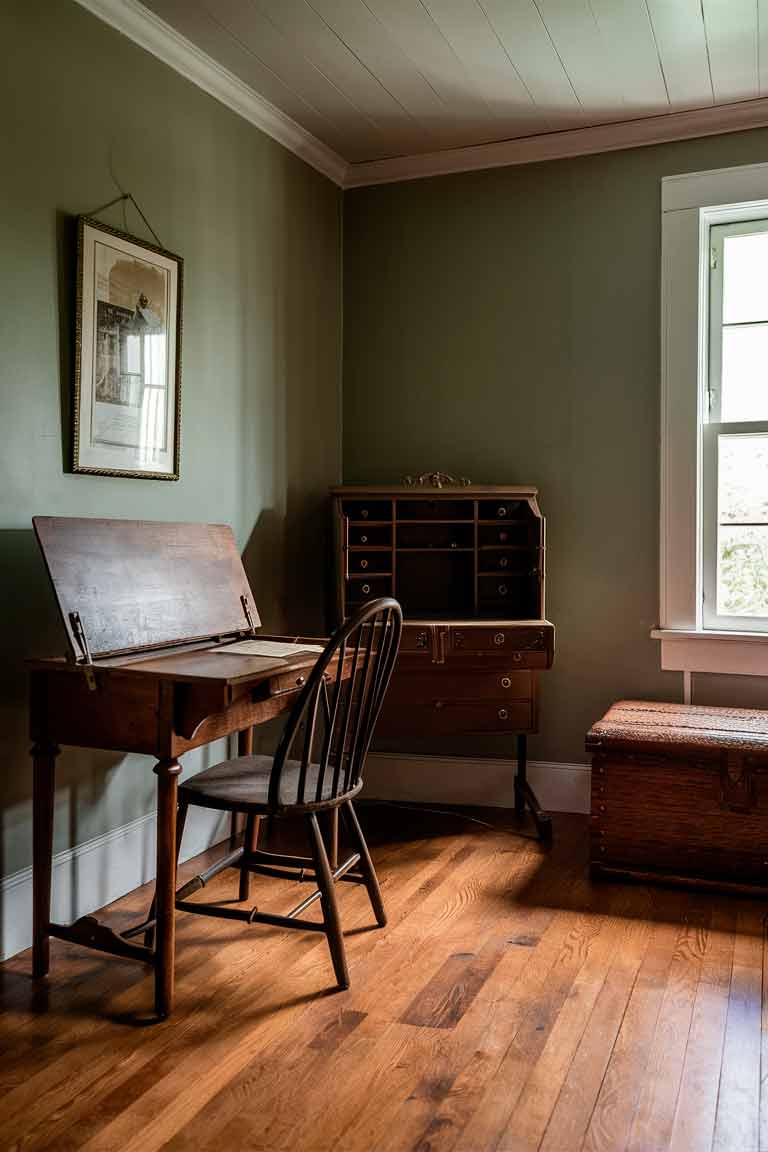
Drop-leaf tables are perfect for tiny colonial homes. They can serve as a desk, dining table, or console and can be folded down when not in use.
Look for seating with hidden storage, like blanket chests that can double as benches or ottomans with removable tops.
A secretary desk can serve as a workspace, storage unit, and display case all in one. When closed, it takes up minimal space while still adding colonial charm to your room.
Utilizing Nooks and Crannies
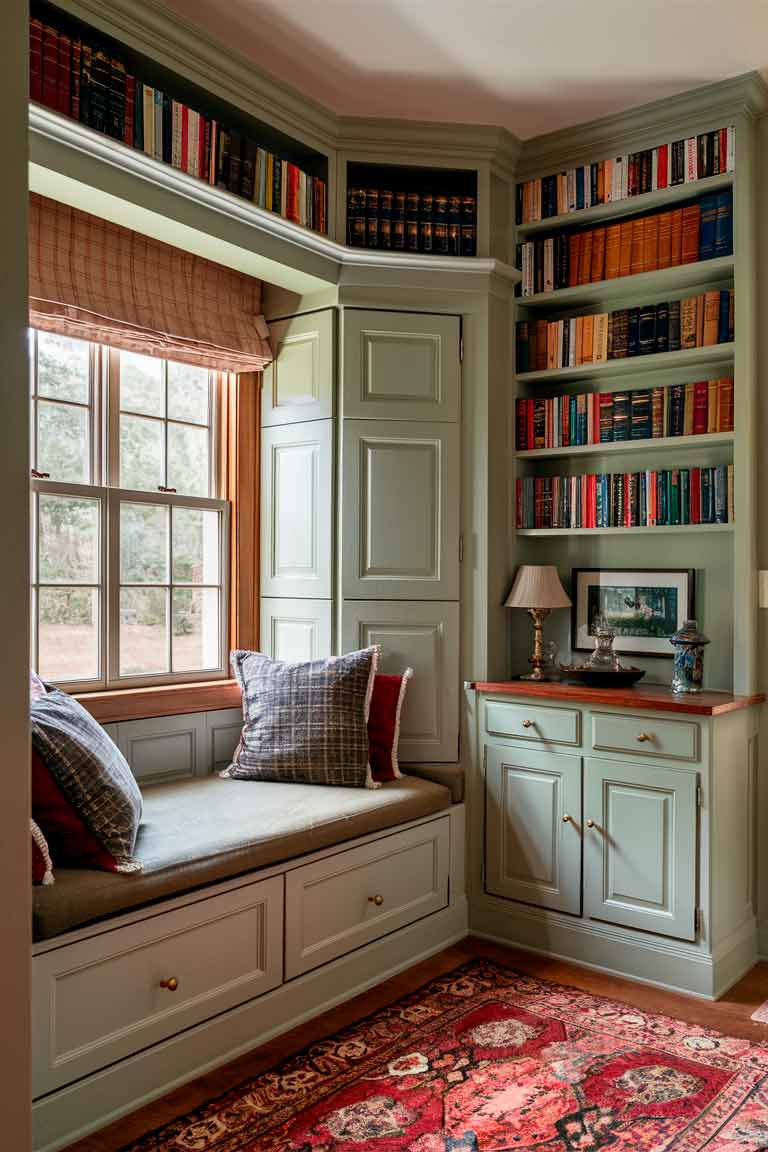
Built-in window seats not only add charm but also provide extra seating and storage. Use the space underneath for storing linens, books, or seasonal items.
Look for opportunities to add built-in shelving or cabinets in awkward corners or alcoves. These can be painted to match your walls, adding storage without making the space feel smaller.
Consider adding a loft space if your ceilings are high enough. This could serve as a sleeping area, home office, or extra storage space, freeing up valuable floor space below.
Bringing It All Together: Creating a Cohesive Colonial Look
Balancing Authenticity and Functionality

Creating a colonial look in a tiny home is all about balance. Choose a few key period pieces as focal points – perhaps a beautiful secretary desk or a four-poster bed – and build your design around these.
Incorporate modern conveniences discreetly. For example, hide your television inside an armoire, or choose appliances with a vintage look.
Maintain a consistent color palette throughout your home to create a sense of flow and cohesion. Stick to warm neutrals with pops of traditional colonial colors like deep blue, forest green, or rich red.
Creating Visual Flow in Small Spaces
Use similar materials across rooms to create a sense of continuity. For example, if you have wooden floors in your living room, consider wooden countertops in your kitchen.
Repeat design elements throughout your home. If you use wainscoting in your living room, consider carrying it into your bedroom or bathroom.
Pay attention to scale when choosing furniture and decor. Oversized pieces can overwhelm a small space, while too many small items can create a cluttered look. Aim for a mix of sizes, always keeping in mind the proportions of your rooms.
Conclusion
Embracing colonial style in a tiny home is all about celebrating the essence of this classic American design while adapting it to modern, small-space living. By carefully selecting key pieces, maximizing every inch of space, and paying attention to authentic details, you can create a home that feels both historically rich and perfectly suited to contemporary life.
Remember, the beauty of colonial style lies in its simplicity, functionality, and timeless elegance – all qualities that lend themselves perfectly to tiny home living. Whether you’re working with a small urban apartment or a compact country cottage, these ideas can help you create a space that’s uniquely yours, deeply rooted in American design history, and perfectly adapted to your modern lifestyle.
So go ahead, embrace your inner colonial decorator, and transform your tiny space into a haven of historical charm and contemporary comfort. After all, good style knows no size limits!

